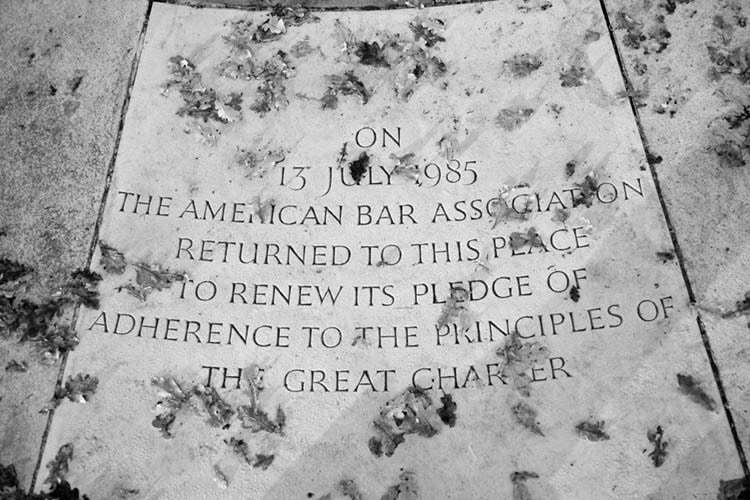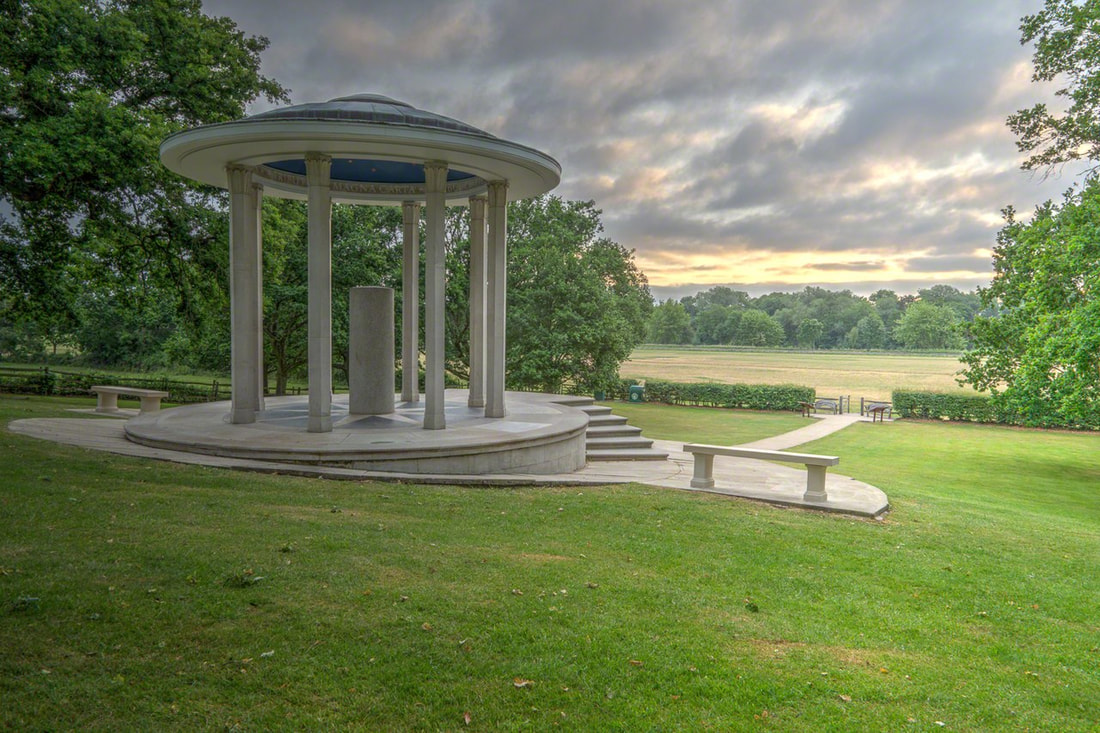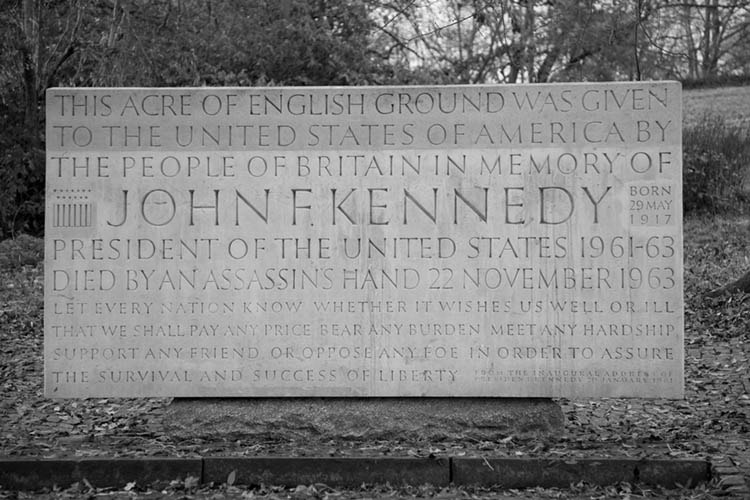powerful, iconic document, even after almost all of its content was repealed from the statute books in the 19th and 20th centuries. Magna Carta still forms an important symbol of liberty today, often cited by politicians and campaigners, and is held in great respect by the British and American legal communities, Lord Denning describing it as "the greatest constitutional document of all times – the foundation of the freedom of the individual against the arbitrary authority of the despot".
The American Bar Association erected a monument in Runnymede, England to commemorate the Magna Carta. Near the Magna Carta monument is a monument to Pres. John F. Kennedy. The following is a list of the Magna Charta Sureties. All of them were barons under King John. Of the twenty five barons, we descend from twelve of them (marked with "*") and from the father of another (marked with "**").
Since the clause anticipated the election of the twenty-five at some time in the future, their names are not actually listed in the charter. Consequently, the committee’s composition is known principally from the list given later in his chronicle by Matthew Paris, the celebrated chronicler of St Albans Abbey (Herts.). It is noteworthy that these men were all layfolk, and for the most part members of the hard-line baronial opposition to the king. No bishop or other Churchman appears, not even, for example, Giles de Braose, bishop of Hereford, who had long been hostile to John. The committee was seen in clear terms as a committee of enforcers, a group whose main responsibilities were to be of a military nature. Why did the barons alight on the number twenty-five in particular? One very obvious reason, it being an odd number, was to avoid split voting. More mystically, however, the number twenty-five was highly significant in the Bible. It was, for example, the age from which God instructed Moses to permit the Levites to be consecrated to God’s service and the age from which many of the kings of Judea had come to the throne; while it also represented ‘the law squared’ in the sense that there are five books to the Pentateuch and, in the New Testament, five loaves for feeding the five thousand. These legitimising links from the Bible were of great importance in the Middle Ages. At a more prosaic level, it is worth remembering that the court of aldermen of the city of London, which is known to have been in existence by 1200, was made up of twenty-five members. It may have been from the number of this body that the barons drew their most immediate inspiration.
1 Comment
1/21/2023 10:15:44 pm
Greeat reading your blog post
Reply
Leave a Reply. |
AuthorsOur family of faith lives on in the individual stories of those who share what they are living and learning now. Archives
May 2024
Categories |



 RSS Feed
RSS Feed